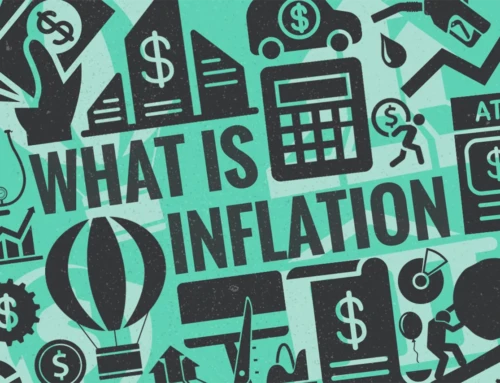What Goes Down

There are two major economic trends that have been unfolding for almost forty years now, and both are nearing a turning point. Interest rates and tax rates have been declining since the early 1980s and both must go up at some point. I’ve been telling our clients that tax and interest rates are going to go up for so long now I sound like a nut job. But sooner or later, every prognosticator is right.
When I tell people rates could rise very quickly, the response is usually a doubtful one. “But Janet Yellen said she’s only going to raise them slowly and in small increments,” is a common response.
This shows how successful the Fed has been in their messaging. We’ve been conditioned to believe Yellen has the entire interest rate market on a string. She does not.
For example, take a look at this chart, which illustrates how fast interest rates can change.
The point at which the yield really shoots upward here occurred when then the Fed, chaired by Ben Bernanke, released notes from a meeting where they discussed ending their quantitative easing policy. Rest assured, Bernanke and his colleagues did not want the ten-year treasury yield to double inside of eighteen months from July 2013 to December 2015. Market participants refer to this period as The Taper Tantrum. That is to say, the bond market threw a temper tantrum at the prospect of the Fed taking away their lollipop.
This is the critical point that the layperson is missing. The Fed has significant influence over the interest rate markets, but they do not control them. The bond market en masse controls interest rates. When bond investors collectively decide there is greater risk to lend, interest rates will go up, and they could go up very, very sharply.
Fast forward to this past week when I read a few articles referring to an interview retired Fed Chairman Alan Greenspan did on Squawk Box. Greenspan said there’s no bubble in stock prices (a point I’ll debate in a minute here), but there certainly is in bond prices, and when it bursts, rates will probably go up rapidly. He does not blame the Federal Reserve Board, because no one likes a turn coat, and who knows what his real motivation is in doing this interview, but he clearly wanted to call attention to this issue, and himself for predicting it.
Now let’s rewind. Interest rates have been declining since 1981. Why? I’m not an economist, and I don’t have a view to the minds of all the major market players who’ve influenced this long-term trend, but my gut tells me rates have declined all this time because the Treasury has needed them to decline in order to facilitate ever increasing government spending.
Since 1981, government spending exploded as we entered the nuclear arms buildup race portion of the Cold War, and then as the war against Jihadist anti-western terrorism escalated. War costs money. A lot of money. And we’ve been at war for a long time. Throughout history when we’ve entered wars, overtly or covertly, our debt has skyrocketed, and then tax rates have followed to bring down that debt.
As our national debt expands (because the government spends more then it collects in tax revenue), our interest payments go up. Our national debt is now at the level it reached at its peak during World War ll, and if interest rates increase, it will cost too much for the government to continue borrowing the way it has been. So, the Fed has been acting as an arm of the Treasury, trying to suppress rates so the Treasury can keep borrowing cheaply and Congress can keep spending.
Greenspan said there’s not a bubble in stock prices. I don’t know what measure he’s using to base this statement on, but stock valuations have only been this high two other times in modern history: just before the 1929 crash, and just before the dot com crash. The stock market rally that began in April of 2009 has been built entirely upon low interest rates. Big companies borrow cheaply in the bond market, then use that cash to buy back their own stock. It’s been a boon like we’ve never seen for executives at the top of these companies.
I also saw this week that Director of the Office of Management and Budget, Mick Mulvaney, came out in support of Treasury Secretary Steve Mnuchin’s appeal to Congress for a naked increase to the debt ceiling. After months of posturing about tying yet another increase to spending decreases and more rigid fiscal discipline, he now says this The Treasury’s recommendation is the right way to do it. Shocker.
One might say I’m just looking for company, because misery loves it, and reassurance in the form of mutual opinion from Alan Greenspan is a thin measure. I’ll cop to that. However, I’d remind you that denial is not a river in Egypt, and what goes down must come up at some point. One whiff of unexpected risk, and bond market participants could cause another major disruption in this long-term trend.
Written
November 26, 2018
Read Time
4 min read
More Posts




